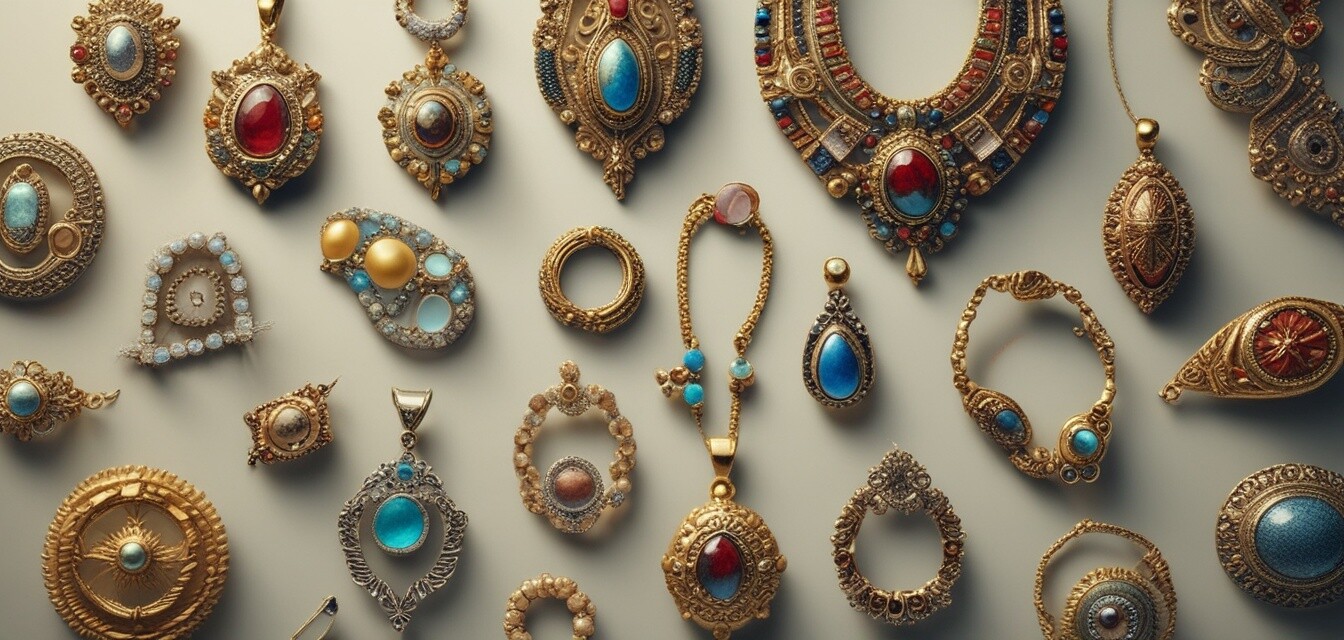
Jewelry and Identity: The Role of Personal Adornment
Key Takeaways
- Jewelry serves as a critical form of personal expression.
- Different cultures attribute unique meanings to various adornments.
- Jewelry styles evolve over time, often influenced by cultural trends.
- The choice of jewelry can reflect personal identity, beliefs, and values.
- Understanding the significance of jewelry can enhance appreciation and connection to one's culture.
Jewelry has long been more than just an accessory; it is a powerful form of personal expression that transcends time and culture. In today’s society, jewelry continues to play a significant role in how individuals express their identities. From traditional cultural pieces to modern designs, the significance and appeal of jewelry vary widely around the world.
The significance of jewelry in personal identity
Jewelry reflects not only aesthetic preferences but also personal beliefs, social status, and cultural heritage. Here are some ways in which jewelry contributes to personal identity:
- Symbolism: Many pieces carry specific meanings related to cultural or personal beliefs.
- Social status: Certain types of jewelry signify wealth, prestige, or social standing.
- Tradition vs. modernity: The choice between traditional and contemporary styles can signal one's connection to their roots or a desire for modernity.
Cultural expressions through jewelry
Jewelry is often seen as a reflection of cultural identity. Different cultures have unique jewelry styles, each with specific meanings and purposes. Below is a table highlighting a few examples:
| Culture | Jewelry Item | Significance |
|---|---|---|
| Indian | Gold bangles | An emblem of marriage and prosperity |
| African | Beaded necklaces | Represent cultural heritage and social standing |
| Native American | Turquoise jewelry | Symbolizes protection and healing |
| Japanese | Kanzashi (hair ornaments) | Traditional adornments marking various life stages |
| Western | Engagement rings | A symbol of love and commitment |
Styles and trends in jewelry
Over time, jewelry styles evolve, often shifting with cultural trends and individual preferences. Various styles represent different eras, aesthetics, and cultural influences:
Modern vs. traditional
Modern jewelry often incorporates sleek designs, unconventional materials, and innovative techniques, while traditional pieces tend to feature rich histories and craftsmanship. Here’s a breakdown of different styles:
| Style | Characteristics | Examples |
|---|---|---|
| Traditional | Intricate designs, use of gemstones, handcrafted | Vintage brooches, gold filigree earrings |
| Modern | Sleek, minimalist, often using mixed materials | Geometric rings, minimalistic necklaces |
| Bohemian | Eclectic, colorful, often with natural elements | Layered bracelets, feathered earrings |
| Statement | Bold designs that draw attention | Chunky rings, oversized necklaces |
Contemporary influences
Social media and global connectivity greatly influence today’s jewelry trends. Individuals often seek unique pieces that tell a story or reflect personal values. Awareness of ethical practices in jewelry sourcing has grown, leading to a preference for sustainable and responsibly sourced materials.
The emotional aspect of jewelry
Jewelry also has an emotional significance, often associated with memories, milestones, and connections to loved ones. Here are a few emotional facets of jewelry:
- Gifts: Jewelry is commonly given as gifts for special occasions, signifying love and appreciation.
- Heirlooms: Passed down through generations, heirloom pieces carry memories and stories.
- Personal milestones: Engagement rings, graduation jewelry, or anniversary gifts commemorate important life events.
Jewelry care and preservation
To maintain the beauty and longevity of jewelry, proper care is essential. Here are some quick tips for preserving your collection:
Beginners Section: Jewelry care tips
- Store jewelry separately to avoid scratches.
- Clean pieces regularly with a soft cloth.
- Remove jewelry before swimming or showering.
- Use appropriate cleaners for each material type.
- Have pieces inspected regularly by a jeweler.
Conclusion
Jewelry is much more than an ornamental accessory; it reflects personal identity, cultural significance, and emotional connections. As you explore different styles and understand their deeper meanings, you'll find that the jewelry you choose serves as a vital expression of who you are. Whether you prefer engagement rings that symbolize love or necklaces that express personal beliefs, each piece tells a unique story.
Empowering yourself with knowledge about the significance and care of jewelry will enhance your experience and appreciation for these pieces of art. For more expert insights, visit our Expert Insights category for tips and advice from industry professionals.